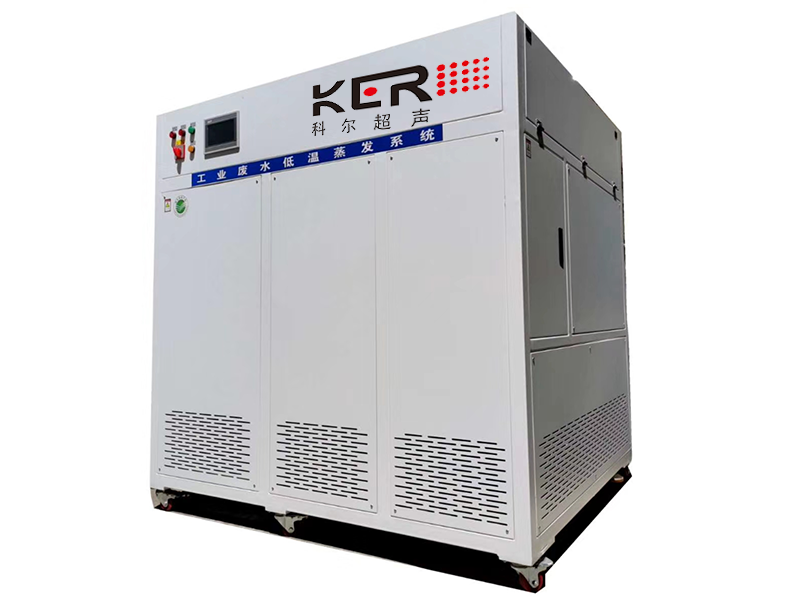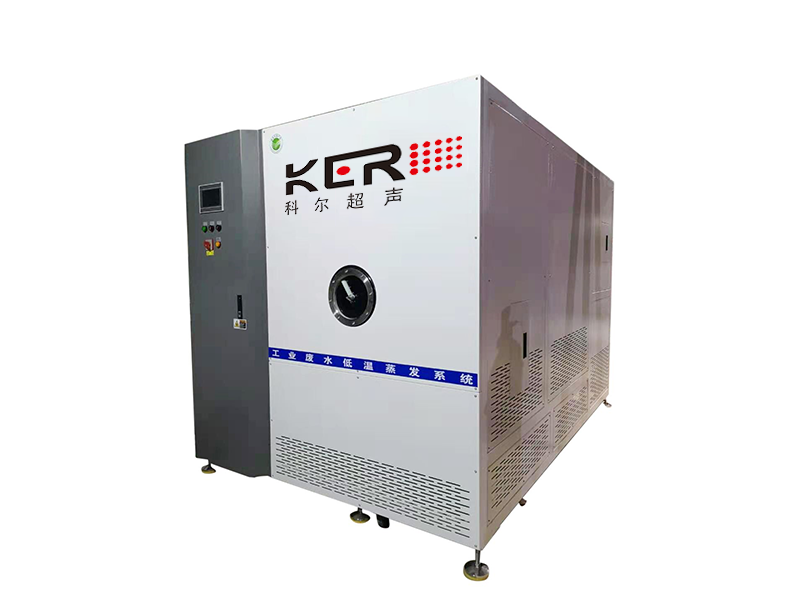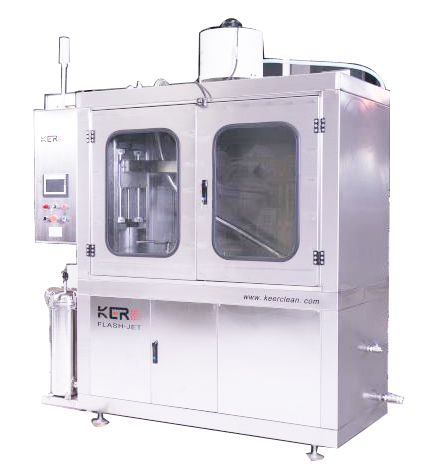
為什麽要進行低溫廢水回(huí)收呢?
作者:創始人來源:http://www.ahfanglei.com/時間:2025-06-03
在工業生產(chǎn)與日常生活中,低溫廢水的(de)產生不可避免。這類廢水通常指溫度介於10℃至40℃之間的水流,其(qí)溫度雖(suī)低於常(cháng)規工業餘熱,卻蘊含著(zhe)不(bú)容忽視的回收價值。
In industrial production and daily life, the generation of low-temperature wastewater is inevitable. This type of wastewater usually refers to water flows with temperatures between 10 ℃ and 40 ℃. Although its temperature is lower than that of conventional industrial waste heat, it contains significant recycling value that cannot be ignored.
低溫廢水回收的首要驅動力源於能源結構的優化需求。傳統能源利用模式存在顯著的“溫度斷層”——高溫熱源被高效(xiào)利用(yòng),而低溫餘熱則直接散失。以(yǐ)城市汙水處理廠為例,其出水溫度常年維持在15℃至25℃,單座日處理量10萬噸的廠區,年散失熱量相當於5000噸標準煤。通過熱泵技術提取這部分熱量,可滿足周邊(biān)20萬平方(fāng)米建築的冬季供暖(nuǎn)需求,能源替代(dài)效(xiào)應顯著。
The primary driving force for low-temperature wastewater recovery is the optimization demand for energy structure. The traditional energy utilization model has a significant "temperature gap" - high-temperature heat sources are efficiently utilized, while low-temperature waste heat is directly dissipated. Taking urban sewage treatment plants as an example, their effluent temperature is maintained at 15 ℃ to 25 ℃ throughout the year. For a single plant with a daily processing capacity of 100000 tons, the annual heat loss is equivalent to 5000 tons of standard coal. Extracting this heat through heat pump technology can meet the winter heating needs of 200000 square meters of surrounding buildings, and the energy substitution effect is significant.
在工業領域,低(dī)溫廢水(shuǐ)回收更是節能降耗的關鍵路徑。食品加工行業的冷卻水、化工生產的工藝冷凝水、製藥企業的潔淨循環水等,均屬於優質低溫熱源。某乳製(zhì)品企業通過實施廢水熱能回收項目,將原本直接排放的28℃工(gōng)藝廢水進行梯級利用,首級預熱原料奶,次級用於廠區(qū)供暖,使綜合能耗(hào)降低18%,投資回收期僅2.6年。
In the industrial field, low-temperature wastewater recovery is a key path for energy conservation and consumption reduction. Cooling water in the food processing industry, process condensate in chemical production, and clean circulating water in pharmaceutical companies are all high-quality low-temperature heat sources. A dairy company implemented a wastewater heat recovery project to cascade the 28 ℃ process wastewater that was originally directly discharged. The first stage preheated the raw milk, and the second stage was used for heating the factory area, reducing comprehensive energy consumption by 18%. The investment payback period was only 2.6 years.

環境保護需求是推動低溫廢水回收的另一重要因素。直接排放低溫廢水雖不造成明顯熱汙染,但會改變受納水體的生態平衡(héng)。研究表明,當(dāng)排放水溫與環境溫差超過(guò)5℃時,可能引發水生生物代謝紊亂。通過熱能回收係統將廢水溫度調節(jiē)至環境±2℃範圍內,可有效維護水體生態係統的穩定性。
The demand for environmental protection is another important factor in promoting the recycling of low-temperature wastewater. Although direct discharge of low-temperature wastewater does not cause significant thermal pollution, it will alter the ecological balance of the receiving water body. Research has shown that when the temperature difference between the discharge water and the environment exceeds 5 ℃, it may cause metabolic disorders in aquatic organisms. By using a thermal energy recovery system to regulate the temperature of wastewater to within ± 2 ℃ of the environment, the stability of the aquatic ecosystem can be effectively maintained.
技術進步為低溫廢水回收提供了可行性保障。熱泵技(jì)術的能效比(COP)已突破4.0,即消耗1千瓦時電(diàn)能可轉移4千瓦時熱能。新型吸附(fù)式熱泵甚至可利用20℃以上的低溫熱源,拓展了回收邊界。在材料領域,石墨烯改性換熱器(qì)的應用使熱交換效率提升(shēng)30%,同時具備抗腐蝕、抗結垢特(tè)性,顯著降(jiàng)低了係統維護成本(běn)。
Technological progress provides feasible guarantees for the recovery of low-temperature wastewater. The energy efficiency ratio (COP) of heat pump technology has exceeded 4.0, which means that consuming 1 kWh of electricity can transfer 4 kWh of heat energy. The new adsorption heat pump can even utilize low-temperature heat sources above 20 ℃, expanding the recycling boundary. In the field of materials, the application of graphene modified heat exchangers has increased heat exchange efficiency by 30%, while also possessing anti-corrosion and anti scaling properties, significantly reducing system maintenance costs.
從經(jīng)濟性視角分析,低(dī)溫廢水回收項目(mù)呈現顯著的正向收益。以商業綜合體為(wéi)例,回收空調冷凝水熱量用於生活熱水製(zhì)備,投資回報率(lǜ)可達15%至20%。在(zài)政策層麵,多地政府已將(jiāng)低溫餘熱回收納(nà)入(rù)節能減排補貼範疇,進一步提(tí)升了項目的經濟可行性。
From an economic perspective, low-temperature wastewater recycling projects have shown significant positive benefits. Taking commercial complexes as an example, recycling the heat from air conditioning condensate for the preparation of domestic hot water can achieve a return on investment of 15% to 20%. At the policy level, many local governments have included low-temperature waste heat recovery in the scope of energy conservation and emission reduction subsidies, further enhancing the economic feasibility of the project.
低溫(wēn)廢水回收的價值不僅體現在能源(yuán)利用層麵,更代表著循環經濟的發展方向。通過構建(jiàn)“廢水-熱能-資源”的轉化鏈條,實(shí)現了水環境治理與能(néng)源革命的協同推進。隨著碳(tàn)交易市場的完善和綠色金融的支持,低(dī)溫廢水回收將成為工業園區、城市片區能源規(guī)劃的重要組成部分,為碳中和目標實現提供重要支撐。
The value of low-temperature wastewater recycling is not only reflected in energy utilization, but also represents the development direction of circular economy. By constructing a conversion chain of "wastewater heat energy resources", the coordinated promotion of water environment governance and energy revolution has been achieved. With the improvement of the carbon trading market and the support of green finance, low-temperature wastewater recovery will become an important component of energy planning in industrial parks and urban areas, providing important support for achieving carbon neutrality goals.
本文(wén)由低溫廢水回收設備友情奉(fèng)獻.更多有關的知(zhī)識請點(diǎn)擊:http://www.ahfanglei.com91污將會對您提出的疑問進行詳細的(de)解答,歡迎(yíng)您登錄網站留言.
This article is a friendly contribution from CNC high-pressure cleaning machine For more information, please click: http://www.ahfanglei.com We will provide detailed answers to your questions. You are welcome to log in to our website and leave a message
推薦產(chǎn)品
推薦文章
 公(gōng)司:濟南科爾超聲波設備有限公(gōng)司(sī)
公(gōng)司:濟南科爾超聲波設備有限公(gōng)司(sī)  熱線:18663767799
熱線:18663767799 地址:山東省(shěng)濟南市濟陽區創業路與啟航街交叉口南40米
地址:山東省(shěng)濟南市濟陽區創業路與啟航街交叉口南40米








 常見問題
常見問題

 聯係(xì)91污
聯係(xì)91污
 谘詢電話:18663767799
谘詢電話:18663767799 E-MAIL:jnkergs@163.com
E-MAIL:jnkergs@163.com 地址(zhǐ):山東省濟(jì)南市濟陽(yáng)區創業(yè)路與(yǔ)啟(qǐ)航街交叉口南40米
地址(zhǐ):山東省濟(jì)南市濟陽(yáng)區創業(yè)路與(yǔ)啟(qǐ)航街交叉口南40米 魯公網安備 37011202001385號
魯公網安備 37011202001385號
